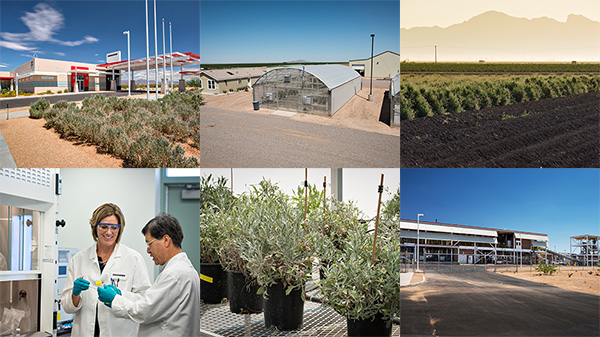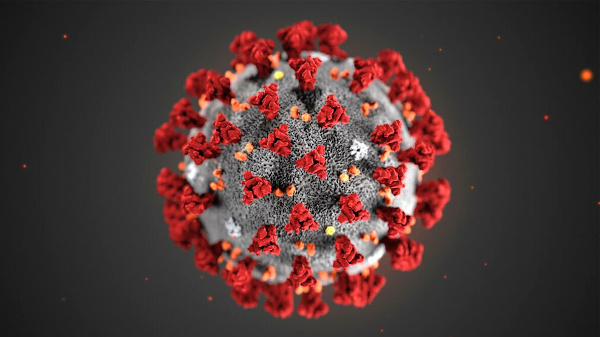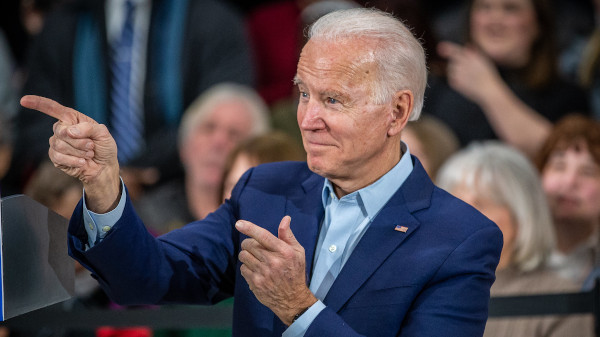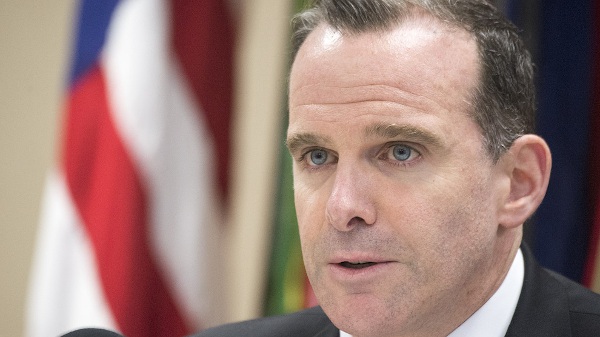Will Guayule Rubber Be A Boom Or Bust For Arizona?
After More Than A Century, The Desert Shrub May Soon Be Ready To Contribute Its Rubber To Automobile Tires And Possibly Other Applications With Arizona As The Nexus

Graphic by Modern Times Magazine.
By Joey Hancock and Ryan Scott
Published on Aug. 26, 2015
Page 3 of 3
This is also being looked into by PanAridus, which is looking to utilize resources more efficiently.
The mission of PanAridus is to figure out how we use the fastest growing land mass on the planet in order to make it used for commodities to grow, Michael Grossman, director of communications for PanAridus said.
“PanAridus launched in 2010 with the express desire to improve the ergonomics, the yields, the growth cycles and the genetics of guayule,” he said. “The problem with guayule, historically, is the research has never been sustained.”
The majority of research in guayule has been off and on due to government grants funding the research and the funding typically only lasts two or three years and then is re-evaluated to see if the sponsor believes the research is producing anything of substance.
“PanAridus opened with the world’s largest privately owned bank of guayule germplasm and has subsequently been granted nine plant variety patents so the plant can grow in different soils, but it is ideally suited to grow in Arizona,” Grossman said. “From the time they started they have doubled the yield of what you can grow per acre, so now you can grow more guayule per acre than you can harvest from the rubber tree in Southeast Asia per acre.”
Two problems have always arisen with the production of guayule. One being the quality of the rubber produced by the plant and the second being the quantity that can be grown and in order to make the plant profitable for farmers these two things need to happen.
“One of the things we did in 2012 was to become the Switzerland of guayule,” Grossman said. “This has long been the holy grail for tire companies. They would love a domestic rubber source because it would cut off 10,000 miles from their supply chain and because the Hevea rubber cartels in Southeast Asia set the price of commodities like OPEC does with oil.”
Supply and demand in the rubber industry isn’t set by a free market and is actually run by whatever is happening in the regions that can help these cartels profit, much like how oil prices fluctuate by what is happening in Saudi Arabia or Kuwait, Grossman said.
What’s Wrong With Hevea Anyway?
With the Unites States being the primary consumer of rubber for the past 100 years and new players coming into the scene like China and India, tire companies are being forced to look for alternative sources of rubber for consumers in the U.S.
“If you have to compete against China and India for a finite supply of rubber and the reason you have to compete for this supply is that Hevea is not a flexible commodity,” Grossman said. “It takes anywhere between six and eight years from when you plant the (Hevea) tree to when you can tap it using 19th century technology and they are basically using slave labor at 15 cents an hour to tap these plants.”
According to Grossman, the reason Bridgestone is now looking into and researching guayule for the production of tire grade rubber is out of a healthy fear of what would become of the company if they can’t control the supply chain.
“What we did in 2012 was to say to all of the major tire companies that we think we have guayule that fits their needs and meets all of the metrics the tire companies use,” he said. “We offered any of them if they were interested in guayule they could purchase samples from us, independently test it and if they liked it great.”
Five of the top ten tire companies in the world, including Cooper Tire and the Ford Motor Company took PanAridus up on its offer and said the guayule was TRS-10 grade and wanted to know how much they could get.
“The great news out of this research is that Cooper Tire is working on actual tire builds,” Grossman said. “We are very close to being able to roll out the first guayule tires ever made which is critical because tires use two-thirds of the rubber in the world and it’s not that medical devices aren’t important, it’s not that wet suits don’t mean anything, but the elephant in the room so to speak is tires.”
What Will The Future Hold?
Next up for PanAridus is expansion and more research into how to make the guayule plant even better for tire grade rubber production.
“Our next step is to build a larger facility in Pinal County so that we can prove our patents and our methods and that they all work,” Grossman said.
Although PanAridus and Bridgestone are competing in the same area of study, with the creation of different strands of the guayule plant, Bridgestone is not seen as a competitor by PanAridus yet is more looked at beneficially for helping the idea of commercialization of the guayule plant reach the people who will potentially be farming it.
“They have been hugely helpful to our ability to commercialize guayule due to the name alone,” Grossman said. “Rubber isn’t rubber. Everybody wants a slightly different composition to their rubber. Those different plant varieties allow us to grow slightly different versions of guayule because each different tire company has their own secret sauce of building it.”
Regardless, many think the time has come when guayule will move from promising alternative to fundamental reality.
“I think ultimately it will be to our economic advantage to grow guayule to supplement hevea," Ray said. “This (plant) is going to be grown in semi-arid areas. Those are areas where hevea is not grown. These are areas where there is a lot of our population, these are areas that need new crops because other crops are going out because of water and other issues. This will help in rural development and many other ways.”
Most Popular

About Us
Login
Contact Us
Subscribe
Advertise With Us
Copyright 2010 to 2020 Modern Times Magazine and Modern Communications. All Rights Reserved.
Terms of Service
Privacy Policy

Login
About Us
Contact Us
Subscribe
Advertise With Us
Copyright 2010 to 2020 Modern Times Magazine and Modern Communications. All Rights Reserved.




